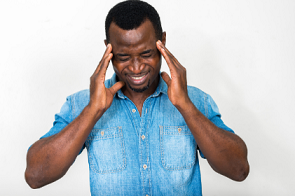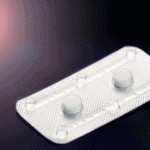
One of the most common conditions or symptoms most patients complain to their doctor about is one or more types of headaches.
Headache is a global problem that affects people of all ages, races, income levels, and geographical areas. A good percentage of the global adult population has had headaches at least once.
Headaches are classified into primary and secondary headaches:
Primary headaches are common headaches. They have no specific cause, although factors, such as muscle tension, stress, or lack of sleep may be a trigger. Primary headaches affect about 46% of the general adult population. The 3 main types of primary headaches are tension headache, migraine, and cluster headaches.
Secondary headaches are linked to underlying health conditions such as sinusitis, traumatic events, hormonal changes, high blood pressure, or tumors.
Each type of headache has its own cause. Some of the causes may be harmless while some may be a cause for concern and the accompanying symptoms may indicate if you need immediate medical attention.

Tension-type headache: This is a benign and most common type of primary headache. It feels like there is a tight band around the head.
A tension headache is the most prevalent type of headache. it can be experienced by anyone, but they are more common in adults and older teenagers. Tension headaches tend to run in families and studies have revealed that it is three times more common in women than in men.
Also known as muscle contraction headache. Tension headache occurs when the muscles of the neck and scalp muscles become tense or contract. The contractions of the muscles can be a reaction to stress, anxiety, depression, or head injury.
Common triggers of tension headaches include:
Call or see a doctor if the headache:
A migraine is a severe pounding pain that usually occurs on one side of the head. This type of headache can be extremely painful and it can make it difficult to carry out your daily activities. Migraine attacks can last for 4 hours to 3 days if left untreated.
Migraine often starts at puberty and mostly affects those between 35 and 45 years. Because of hormonal influences, it is twice more common in women than in men.
There are 4 stages in migraine, though not everyone experiences all the stages. These four stages are prodrome, aura, attack(the headache), and post-drome. There are 3 types of migraine depending on the stage of migraine one experiences –
The exact cause of migraine is unknown, some medical experts believe that it can be caused by abnormal brain activity.
It tends to run in the family. So, your chance of having them is high if you have a close family member who has them.
Some factors that can trigger migraine are:
The symptoms of migraine are not the same for everyone. It differs depending on the type of migraine. But the common symptoms are
You may also experience
Contact your doctor if:

This is a rare and most severe type of primary headache. Also known as a suicidal headache, this type of headache is characterized by a sudden attack of extremely painful headaches that comes in clusters. It usually recurs at the same time of the day or night for several weeks.
Cluster headache occurs on one side of the head, usually behind or around one eye, and continues with a migraine-like headache and nausea. The intensity of pain gets worse 5 to 10 minutes after it starts and lasts for about 3 hours.
Cluster headaches mostly affect adults 20 years and older. it is more common in men than in women, according to WHO, it affects 6 men to a woman.
The exact cause of cluster headaches is unknown, but it is believed to be related to the sudden release of histamine or serotonin in the body. Some of the things that may trigger cluster headaches are:
Cluster headaches cannot be cured and since they occur suddenly, over-the-counter drugs like paracetamol are not fast and effective for treating them. The ways to treat cluster headaches involve:
Because this type of headache is rare and severe, it is advised that you see a doctor when you experience them for a proper diagnosis, to rule out any other underlying medical condition which may have similar symptoms, and to get proper treatment.

Most times, migraine and tension headaches have been misdiagnosed as Sinus headaches. According to the American migraine foundation, 90% of the time, migraine with nasal symptoms has been self-diagnosed as a sinus headache.
Sinus infection known as sinusitis causes pressure and pain in the sinus resulting in sinus headache. Sinus headache feels like a continuous pain inside the cheeks, forehead, and sometimes the nose bridge. It may feel like a migraine but it is not accompanied by nausea or vomiting nor is it worsened by light, or noise as in migraine headaches.
Sinus headache is caused by a sinus infection(sinusitis) and any other factor that could cause sinus infection can also trigger sinus headache. This includes:
Common symptoms associated with sinus headaches are
1. Addressing underlying sinus issues: To get rid of a sinus headache, you have to treat the cause. This includes taking allergy medication for sinus infections caused by allergies.
2. Pain relievers such as ibuprofen and paracetamol can help to relieve the pain. Over-the-counter cold medications can also help to relieve pain and a blocked or runny nose. OTC antihistamines may help if the headache is caused by allergies
3. Nasal irrigation can help to rinse off most of the thick mucus and relieve the symptoms of sinusitis which in turn will help to get rid of sinus headaches.
You can manage sinus headaches at home with OTC medication if it is not causing you too much pain. However, consult your doctor if:

Fluctuation in hormone levels during the menstrual cycle, pregnancy, and menopause is one of the main factors why most women have severe headaches mostly confused as migraine. It can last for a few hours or days and can be worsened by movement, light, or noise.
Hormonal headaches are triggered by a change in estrogen and progesterone levels. Factors that can cause changes in levels of hormones and trigger hormonal headaches are:
The main symptom of hormonal headaches is migraine accompanied by:
1. Hormonal therapy: A licensed doctor may prescribe medication with a lower dose of estrogen to relieve symptoms or recommend starting the next cycle of contraception early. This means you have to skip last week’s hormone-free placebo pills. Doctors usually recommend this method for three to six months, to reduce the frequency of headaches.
2. Lifestyle changes that can help with hormonal headaches include:
3. Pain relievers such as:
Talk to a doctor if:
This is the most common secondary type of headache. Also known as medication overuse headache. It occurs as a result of frequent use of certain medications.
It may affect up to 5% of the general population. Women experience it more than men. It usually occurs as a result of regular, long-term, or excessive use of pain relievers or headache-treating medications
The same medications initially intended for relieving headaches and other pain can trigger subsequent headaches if they are used too often or for a long period. These medications which can be OTC pain relievers or prescription – only medicine (POM) include:
The symptoms of rebound headaches may differ depending on the type of headache that was initially treated and the medication taken. Rebound headaches typically:
Other symptoms are:
1. Identifying and discontinuing trigger medications. Consult your doctor before stopping your medication if it is prescribed and you are still undergoing treatment.
2. Detoxification. You can break the cycle of headaches by either immediately stopping the pain medication, or gradually withdrawing from the usage of the drugs.
3. Preventive measures
Almost everyone has experienced headaches at one point or the other in their lives. Knowing and recognizing the different types of headaches can help to effectively prevent and manage headaches.
Headaches can be managed using different medications depending on the type of headache. Lifestyle modifications can also be used to prevent or reduce the frequency of headaches occurring.
A headache can be an indication of a serious medical condition. So don’t rush to pop drugs into your mouth whenever you have a headache.
It is recommended that you consult with a healthcare professional to determine the exact underlying cause of your headache if you experience frequent headaches. The doctor will develop a personalized treatment plan that will work for you.
Headaches can be a bedevilment and can make people feel under the weather. Some people can’t tell the difference between the different types of headaches and just self-medicate.
With telemedicine, people experiencing headaches can schedule virtual appointments with doctors or neurologists. Through these virtual sessions, patients can know the different types of headaches and how to treat them individually. This is especially helpful for people facing time constraints or living in remote areas.
Instead of just self-medicating, telemedicine allows you to log your symptoms with doctors online. These doctors will diagnose what type of headache you have based on your symptoms. They will also offer personalized treatment options and highlight any potential triggers. They will also monitor the effectiveness of the treatments virtually.
Additionally, telemedicine can help patients link up with not just doctors, but counselors and therapists who can provide lifestyle counseling and guidance.
Bad signs of headaches include headaches that occur daily, headaches that steadily worsen, headaches accompanied by fever, stiff or tight neck, confusion, decreased alertness or memory, and headaches that cause weakness, seizures, visual disturbances, numbness, or slurred speech.
Popping up pills isn’t the only way to get rid of a headache. A simple hot or cold shower or bath is usually enough to get rid of a headache. However, you also rest in a quiet room and place a cool cloth over your forehead.
If your headache persists for several minutes or an hour, you don’t have a brain tumor. Headaches caused by brain tumors are very different from your typical migraines or other types of headaches. Headaches caused by a brain tumor display the following symptoms:
Headaches that occur occasionally usually require no medical attention. However, if you experience headaches everyday, it might be time to consult with your doctor.
You can (to an extent) know what kind of headache you’re having by determining the location of the headache.
harvard.edu (2024) Headache Pain: When to Worry, What to Do – Harvard Health Publishing
mountsinai.org Managing tension headaches at home Information | Mount Sinai – New York
MedicalNewsToday (2020) Brain tumor headaches: Signs, symptoms, and more
National Institute of Neurological Disorders and Stroke (.gov) Headache | National Institute of Neurological Disorders and Stroke
Medical News Today (2024) 11 Types of headaches and treatment options
healthcareOctober 17, 2025
healthcareSeptember 10, 2025
healthcareJuly 26, 2023
healthcareAugust 28, 2023
MedicationNovember 25, 2024
NutritionFebruary 5, 2025








